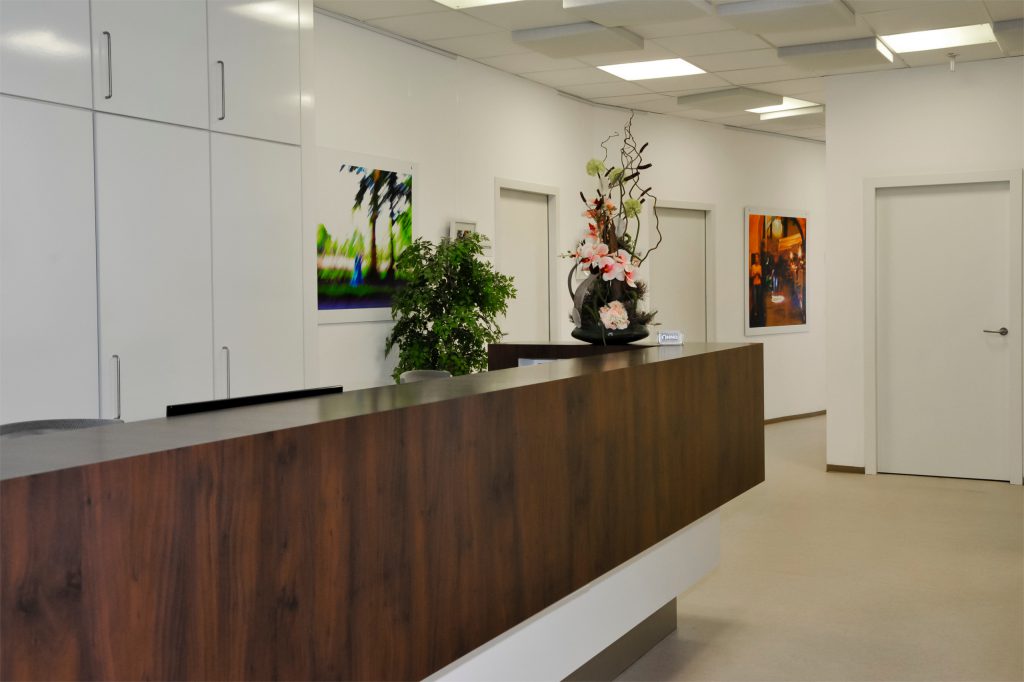Anatomy/Terminology
Sinuses are air-filled spaces within the bones of the skull and face. These hollow recesses reduce the weight of the skull and create vocal resonance. Sinuses are lined with mucous membranes and are connected to the inside of the nose and each other through small openings. These openings normally supply the sinuses with air and drain mucous produced in the sinuses into the nose. Sinuses come in pairs and are called frontal (above the eyes), maxillary (under the eyes), ethmoid (between the eyes) and sphenoid (deep in the head) sinuses. The nasal cavity is separated by a partition, the nasal septum, into the right and left side and also contains the nasal turbinates which regulate air stream.
Illness sinusitis
When the mucous membranes in the nose and sinuses become inflamed and swollen due to infections, allergies, and environmental factors, air does not reach the sinuses and the produced mucous cannot drain. The swollen tissue can block or obstruct the drainage canals, leaving the mucous trapped inside the sinuses, where it thickens and results in a sinus infection (sinusitis). This cycle can lead to chronic sinus infections. Frequently, a deviated septum also causes blockages by constricting the drainage canals. Nasal polyps may form when the mucous membranes of the nasal passages and sinuses are chronically inflamed, causing difficulties with nasal breathing. Acute and chronic sinus infections or sinusitis are very common. In most cases sinusitis leads to bronchitis and lower respiratory tract infection.
Symptoms and Ailments
The most common symptoms of acute sinusitis are nasal obstruction or congestion and runny nose and can include headaches and pain in the teeth as well as an impaired sense of smell. With chronic sinus infections, difficult breathing through the nose and impaired sense of smell are usually common, along with headaches and post-nasal drip from the nose into the throat. Frequent consequences of chronic sinusitis are ear pain, sore throat, voice and bronchial problems. Acute and severe sinusitis with pyhorrea can lead to the spread of infection to the eye or brain.
Tests and Diagnosis
The first step is to take a detailed medical history. Rhinoscopy shows the constriction of nasal channels through a deviated septum or turbinate swelling. A rigid endoscope aids in examining the openings to the sinuses and locates any polyps and pyorrhea. Ultrasound is a useful tool for examining frontal and maxillary sinuses. Images taken using computerized tomography (CT) reliably show details of the sinuses and nasal area and also rule out tumors.
Differential diagnosis
Especially in the case of onesided illness, malignant tumors and fungal diseases should always be ruled out.
Treatment
Conservative treatments are always the first course of action to normalize air flow to the sinuses and relieve congestion by implementing various measures to reduce swelling, including medications and inhalation therapy. In the case of allergies, immunotherapy is utilized. Depending on the severity of symptoms and if all these conservative treatments are not sufficient, surgery as the course of treatment may be the last resort.
Surgery
Surgery’s aim is to restore nasal breathing, to ensure airflow to the sinuses and the drainage of mucous produced in the sinuses. Modern sinus surgery is performed exclusively through the nostrils. The goal is a minimally invasive procedure which leaves healthy mucous membranes intact and produces as little damage as possible. If a deviated septum is present, this is addressed first. Should the turbinates be too large, they are reduced to normal size. Then the openings are enlarged as needed and the swollen mucous membranes are removed from the sinuses. This is called functional endoscopic sinus surgery (FESS). Long-term studies have shown that approx. 80% of patients report lasting relief after endoscopic sinus surgery, including improvement in the areas of asthmatic symptoms, chronic bronchitis and susceptibility to infections. If necessary, dressings are inserted to stop blood flow after surgery and in most cases these can be removed the next morning.
Prognosis and Duration
Long-term studies confirm the success of this minimally invasive sinus surgery through lasting relief of symptoms with all patients who have undergone surgery, as well as improvement of asthmoid conditions, chronic bronchitis and susceptibility to infections. However, it is possible for sinus openings to close or constrict again, which is termed a recurrence, and in rare cases additional surgery may be required.


